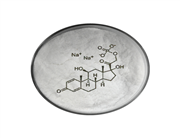Chemical properties:
colorless translucent crystal or white crystalline powder. The relative density is 1.52, and the melting point is 35.1℃. Soluble in water, insoluble in ethanol. The aqueous solution is weakly alkaline, and the Ph of 3.5% aqueous solution is 9.0 ~ 9.4. It is easy to weather into a salt containing 7 crystalline waters in the air, and loses all the crystalline water when heated to 100 ° C to become a white powder anhydrous substance, and becomes a colorless translucent crystal or white crystalline powder of sodium pyrophosphate at 250 ° C. The relative density is 1.52, and the melting point is 35.1℃. Soluble in water, insoluble in ethanol. The aqueous solution is weakly alkaline, and the PChemicalbookh value of 3.5% aqueous solution is 9.0 ~ 9.4. It is easily weathered in the air to become a salt containing 7 crystal waters, and when heated to 100 ° C, it loses all the crystal water and becomes a white powder anhydrous substance, and becomes sodium pyrophosphate at 250 ° C
Uses:
Used as boiler water softener, flame retardant for fabric, wood and paper, glaze and solder. It is used in the production of detergents, cleaning agents for printing plates and mordant for dyeing. In the printing and dyeing industry, it is used as a stabilizer for hydrogen peroxide bleaching and a filler for rayon (to enhance the strength and elasticity of the silk). It is a raw material for the manufacture of sodium pyrophosphate and other phosphates, and also a culture agent for monosodium glutamate, erythromycin, penicillin, streptomycin and sewage biochemical treatment products. It is also used for plating and tanning leather.
Production method:
(1) recrystallization method. Disodium hydrogen phosphate dodecahydrate is dissolved in hot water, arsenic and heavy metals are removed by sulfide, decolorized by activated carbon, and adjusted to PH8.2-8.4 by food phosphoric acid. The product is obtained by filtration, cooling crystallization, centrifugal separation and drying.
(2) thermal phosphoric acid method. It is obtained by thermal neutralization of phosphoric acid with soda ash or sodium hydroxide. Add sodium hydroxide or soda ash to concentrated phosphoric acid to control PH of 8.9-9.0. The neutralizing solution was filtered, concentrated to a relative density of 1.24-1.26 (26-30° Be) and cooled to below 35 ° C for crystallization. Centrifugal separation, drying products, mother liquor sent to the neutralization process for reuse.






 China
China

